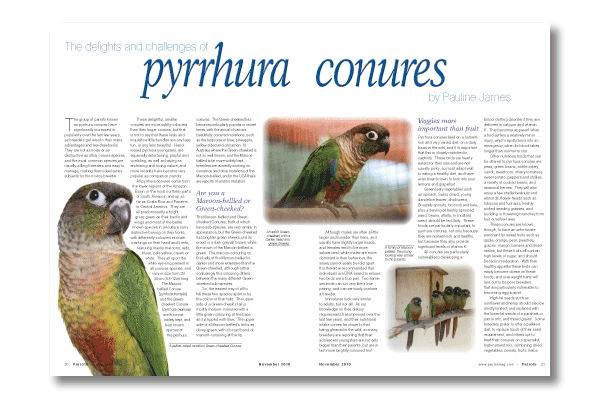by Pauline James
The group of parrots known as pyrrhura conures have significantly increased in popularity over the last few years, as breeders get wise to their many advantages and few drawbacks. They are not as noisy or as destructive as other conure species, and the most common species are usually willing breeders and easy to manage, making them ideal aviary subjects for the novice breeder.
These delightful, smaller conures are more subtly-coloured than their larger cousins, but that is not to say that these lively and inquisitive little bundles are any less fun, or any less beautiful. Hand-reared pyrrhura youngsters, are especially entertaining, playful and confiding, as well as having an endearing and loving nature, and more recently have become very popular as companion parrots.
All pyrrhura conures come from the lower regions of the Amazon Basin, in the most northerly parts of South America, and up as far as Costa Rica and Panama in Central America. They are all predominantly a bright grass green on their backs and wings and most of the better known species in aviculture carry distinctive barring on their fronts, with differently-coloured intricate markings on their head and fronts, featuring mainly maroons, reds, blues, pale yellow, cream or white. They all sport the white eye-ring present in all conures species, and vary in size from 22-30cm (8.5-12in) long.
Read more in the magazine…









Parrot Chat
Buyers Guides
Breeding articles